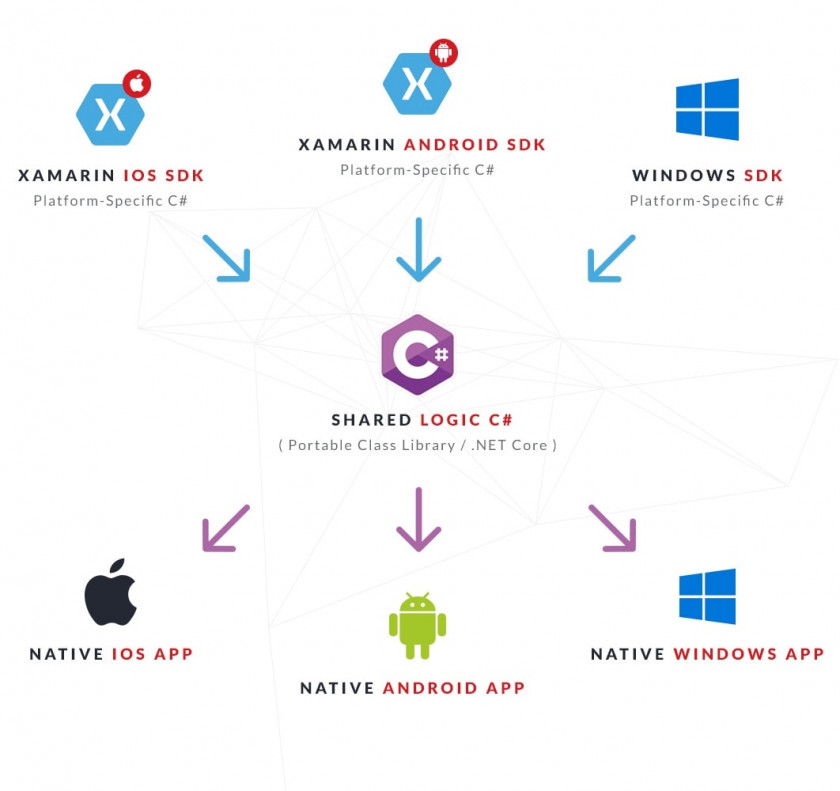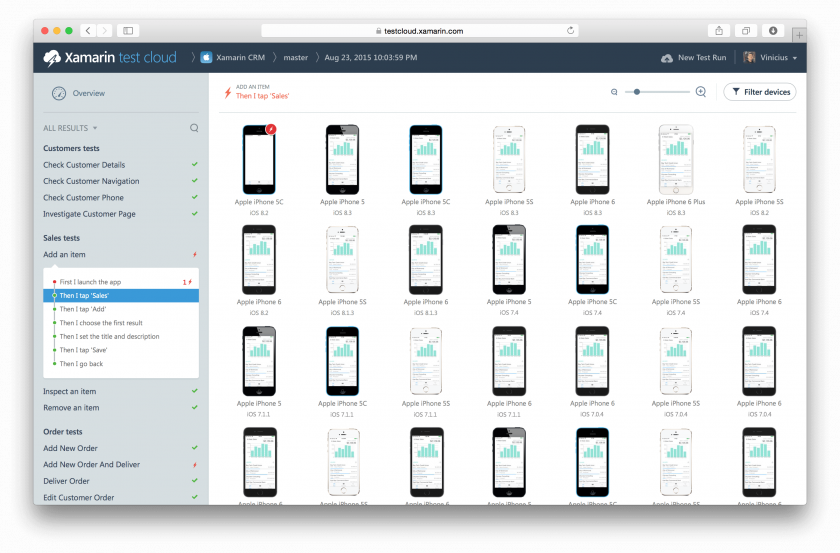Xamarin, on the other hand, is much more versatile, better in terms of performance, responsiveness, and looks. It’s the closest thing to native.
Okay, so how exactly does Xamarin compare to Cordova?
It is far easier to build applications on Cordova as the developer only needs knowledge of HTML/CSS and JavaScript – unlike the advanced skill set required for Xamarin.
There is a steep learning curve for Xamarin programmers as the applications built on the platform are typically far more complex and capable.
What’s worth pointing out is that nowadays both the environments are open source.
Yep, Xamarin is open-sourced as well, but only for non-commercial use. Developers require a community license for Xamarin, and businesses, like ourselves, require enterprise and professional licenses.
There is, though, a commercial license for small dev teams.
Applications developed on Xamarin are superior as they offer substantially better performance, UX, UI, and functionality. Xamarin replicates native performance via its C# wrappers, and the platform is the closest you can get to native through a cross-platform environment.
With the source code, developers can create radically different interfaces for different platforms, and Cordova does not even come close to such native-level performance.
Also, the user interface is far more responsive on Xamarin applications. What’s more, Xamarin provides an extensive degree of hardware support. Developers can write new features and make changes with ease.
Cordova applications share one UI across platforms. You can have different UIs across platforms, but this only serves to decrease performance and the value of code sharing, so it is almost never recommended.
You can reuse up to 80% of the source code on Xamarin, and you can achieve a higher re-usability percentage on Cordova if the UI is the same across platforms.
If the UI differs across platforms, developers will need to use CSS frameworks to reuse the source code, and the levels of re-usability achieved are similar to Xamarin.
All good, but what should you go for as a business?
On the face of it, Xamarin is one of the very few platforms that are capable of delivering on the promise of cross-platform application development. Developers are capable of creating better software than is possible through Cordova.
Xamarin apps will provide a stable degree of high performance on all devices irrespective of the version of Android, Windows Phone, or iOS whereas Cordova equivalents are considerably slower on older Android and iOS models.
With that said, Cordova is useful for companies and developers working on tight budgets. It’s also worth to check out PWAs as an alternative.
To put in a plain language, Cordova gives you the ability to make simple apps fast. If your team is more oriented in the front-end development, Cordova will be a good choice.
But…
Cordova is not native. Period
Xamarin is perfect for companies that seek native-level performance while decreasing the associated development and maintenance costs.
The tech is surpassing any hybrid mobile development tool available today, and Xamarin is recommended for enterprise mobile solutions where the core logic can be easily shared across platforms.
In addition, the continued development of Xamarin.Forms will provide an even finer performance in the near future and allow developers to reuse up to 96% of the source code.
Plus, with Xamarin.Forms, the time to market will be similar to native iOS and Android apps. They can also be used for prototyping and applying for simple MVPs.
Still, we’re not using .Forms just yet. While the idea itself is brilliant, the technology is not mature enough. “We kept the native front-ends approach”, our Xamarin team explained in this article. “It takes more time and effort to develop, but the end result is bulletproof.”
But you know what? As community support grows for Xamarin, and the idea itself becomes more widespread, the idea of .Forms might have a chance of dominating the market completely.
True cross-platform mobile development
Let’s take it step by step.
Both Xamarin and Cordova possess unique features, and they offer differing levels of functionality and performance based on application requirements.
Xamarin is one such cross-platform development tool that has its origins in the .NET and Mono frameworks.
Mono is for Linux what .NET is for Windows, and Miguel de Icaza, the founder of Mono, is one of the individuals who also came up with the idea for Xamarin.
In order to develop an application with Xamarin, one must possess knowledge of Xamarin, C#, IDE, Android platform, iOS platform, and all the app models on both platforms.
As of now, Xamarin’s three main commercial offerings are:
- Xamarin.iOS
- Xamarin.MacOS
- Xamarin.Android.
All of these services are written on top of the open-sourced Mono which runs smoothly on every conceivable platform.
The utilization of runtime is critical to the success of Xamarin applications on Mac, iOS, and Android. This allows for:
- Memory allocation
- Underlying platform interoperability
- Waste collection
- Mobile cross platform assistance
- Access to the massive base class library (BCL)
- Modern language constructs
- Complete integration of all the underlying SDKs in Windows, Android, and iOS.
What, exactly, is Xamarin?
It’s something that we love.
Something that we trust will help us to build an even better company.
Something that, as .NET developers, are really happy to have in our arsenal.
It’s a mobile application development environment that basically consists of native SDK and C# libraries wrapped in the .NET layer.
Any program that is written using the .NET framework can be executed in a common language runtime environment. This shared code typically involves business logic, data access, and network communication. The applications developed on Xamarin are essentially built on this trifecta.
To develop apps based on Xamarin, developers require at least an Apple Macintosh running on OS X Yosemite. This is if you require an iOS or Mac OS application as irrespective of IDE you need a Macintosh.
Xamarin applications are completely written in C#. Xamarin.iOS requires the iOS SDK and Xcode for applications. You will need Xcode so you can download iOS SDK.
With Microsoft’s purchase of Xamarin in early 2016, the platform went open source albeit for non-commercial use. It was at Build 2016 that Microsoft announced Xamarin Software Development Kit would be open-source, and that it would be available with Visual Studio.


